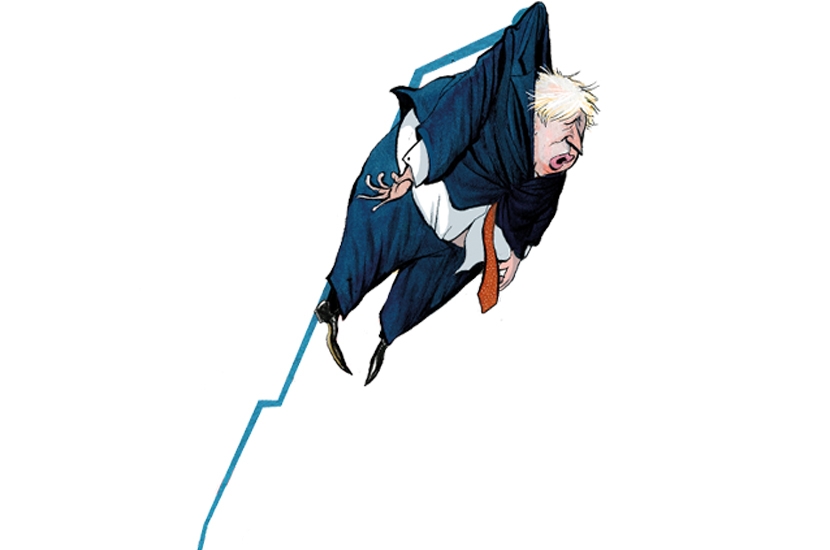The NHS Test, Trace and Isolate programme — which was meant to be one of our main weapons in the fight against a second Covid-19 peak — has not had a good few weeks. First, when schools went back last month, an inevitable rush for tests was not met with sufficient supply. It then emerged that 16,000 people who had tested positive had failed to be transferred to the tracing system. Not a great start.
Then, the government’s Scientific Advisory Group for Emergencies (Sage), for long an advocate, quietly disowned the programme, saying it is having marginal impact. Are these just teething problems as the programme gets scaled up? I’m afraid that even if there are no more glitches or shortages of tests, three fundamental strategic flaws mean it will not suppress a second wave of Covid-19.
Let’s look at the latest data available from the first week of October. There were almost 200,000 new infections in England according to the Office for National Statistics. This is a 15-fold increase since mid-August. NHS Test and Trace located around 40 per cent of those infected: an improvement from late July when less than 20 per cent were found. This improvement comes partially from the doubling of testing, but also some targeted testing around university and other local outbreaks.
The bad news is that around 60 per cent are still not found, so their close contacts are not traced and isolated. This majority missed by testing is somewhat inevitable given the first strategic flaw in the approach: we rely on infected people to get a test. But ONS research suggests that two-thirds of people infected with Covid-19 are asymptomatic — and so don’t feel ill enough to get a test. In these circumstances, NHS Test and Trace did well to get even 40 per cent. But it can’t be expected to find people who don’t know they have the virus.

Let’s look at those who were found, the 88,000 cases that were transferred to contact tracing. Of these cases, 20,000 were not reached. Some 10,000 were either unable (or probably unwilling) to provide details of anyone they had been in contact with. So only two-thirds provided the close contacts needed. These numbers illustrate the second strategic flaw: many Brits don’t believe in ‘grassing on their friends’, especially not if the police could be involved.
The system was given the names of around 220,000 close contacts, but failed to reach more than a third of these. Perhaps the contact details provided were wrong or people did not pick up calls from numbers they did not recognise.
Reaching close contacts is not enough. They need to be spoken to within five days of their contact with the infectious person, before they in turn become infectious. The clock is ticking, given that on average it takes about two days from testing to results. Add a day to set up the test, then you’re left with just two days to complete the contact tracing. We know that in that week, almost 40,000 were not reached in this timeframe.
Not all of those asked to isolate will have complied. The government is coy on releasing its estimate, but a Sage survey suggests that only 20 per cent complied fully. This illustrates the third flaw: we will often not do what the government tells us. So in aggregate only around a third of the close contacts identified, were reached, asked to isolate in time, and complied (I have assumed 70 per cent effective compliance).
Multiplying the success rate from each stage, the overall efficiency of the Test, Trace and Isolate programme was around 9 per cent. This is an improvement on the 5 per cent in July that I reported in these pages, but unfortunately it does mean that for every infected person isolating, around 11 are missed. This is unlikely to be a formula for the successful containment of a pandemic.
In the first week in October, around 75,000 uninfected individuals will have been asked to isolate
To the official £12 billion direct cost, we must add an indirect cost: the many people being asked to isolate when they don’t have the virus. No official estimate is made of these ‘false isolations’, but we can do a rough scaling. Each infected person will on average infect 1.4 people (the current R-rate for the virus), but each infected person identifies around 3.8 close contacts, which suggests that, very roughly, 2.4 of these close contacts are not infectious. On this basis, in the first week in October, around 75,000 uninfected individuals will have been asked to isolate for a fortnight.
These ‘false isolations’ have an annualised economic cost of several billion pounds — but they also undermine compliance with isolation requests. And that’s before we consider the additional economic cost for the individuals who were not infectious but still had to quarantine after foreign travel.
Even if its execution had gone swimmingly, these strategic flaws mean the programme can never play a meaningful (let alone cost-effective) role in containing the virus.
But there is a glimmer of hope from the progress reported last week by the Prime Minister for his mass testing ‘moonshot’. This envisages millions of quick turnaround, often self-administered non–laboratory tests at multiple locations, including home, schools, offices, universities, airports, care homes, and live arts or sports events. A great many people are sceptical that this can ever work, but I’m at the more optimistic end of the spectrum. And — full disclosure — I’ve invested in a number of the testing and treatment innovators.
The more we test, the more asymptomatic people can be found. With a simpler mass testing process, there would be no requirement to ‘grass up’ our recent contacts, since infectious people would be found early enough to isolate themselves before they infect others. Citizens would only be expected to isolate if their self-administered tests suggest they are actually infected, and not if they could have been infected from a close contact. This changes the incentive to isolate, which should lead to better compliance, especially if the government also offers an isolation package that might include financial support, remote medical consultation, help with tasks such as shopping, and early home treatment for high-risk cases.
Some statisticians have raised a concern that we could get lots of false positives. I am optimistic that the technology behind the new tests are very specific to Covid-19, so will result in relatively few. And people who do test positive should be given another type of test. The chances of two false positives in a row are far smaller. What’s more, the number of days lost from ‘false positives’ could well be fewer than those lost from ‘false isolations’ in our existing tracing programme.
The management challenge of mass testing is not simple. We will probably need to deploy the best of the private sector logistics companies, the army and manufacturing, and a volunteer squad of the scale of the London Olympics (this cohort of volunteers could also help change the public’s attitudes towards testing and isolating). We will need to use technology to teach people how to self-administer tests and isolate. Overall, the most important thing is to invest ahead to make sure that our mass testing programme has better execution than has been achieved with Test, Trace and Isolate.
It’s a long shot, but far from impossible. And the prize is pretty big: if we can get it to work, mass testing could provide (before the full vaccination rollout) a way out of lockdowns and could potentially restore some normal aspects of Christmas.
spectator.co.uk/podcast - Richard Dobbs and virologist Dr Elisabetta Groppelli on the failings of Test and Trace.






Comments